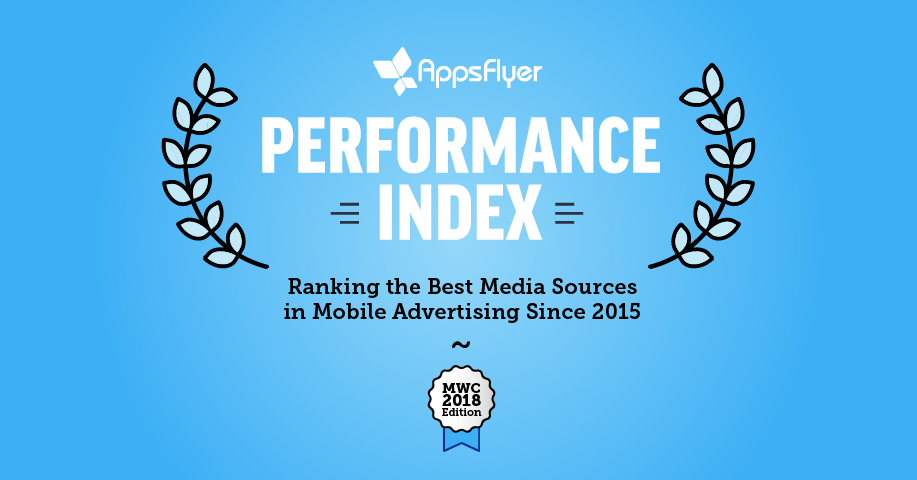![]()
Hola señoras y señores! February, the shortest month of the year, is famous for the Superbowl, Valentine’s Day and for being really (really) cold, among other things. Personally for me, for the 10th(!) time, it is also famous for being Mobile World Congress month!
You’re probably already trying to figure out what your week at the show is going to look like, and work on your gameplan to make the most of what it has to offer. And as always, I’m here to help! I’m happy to welcome you to the third annual, all-encompassing, guide to the MWC 2018 party scene. So buckle up and put on your comfy shoes, it’s going to be a crazy week. Let’s go!
Sunday, February 25
- 18:00-22:00 Mobile Sunday 2018 with Tech.eu
Antiga Fàbrica Estrella Damm, 515 Carrer del Rosselló
Mobile Sunday is back! The annual premier networking event in Barcelona taking place the evening before the Mobile World Congress and 4YFN kick off. Get your ticket here.
Monday, February 26
- 21:00- 03:00 – MWC Urban Rave
The Sutton Club, Carrer de Tuset St. 13
Hosted by AppsFlyer, in partnership with App Annie, Google, Remerge and Segment. If you’ve been to Mobile World Congress, you know you can’t miss this party. If you haven’t been yet, you’ve probably heard stories. Spoiler alert – they’re all true! Join us for the biggest and most highly anticipated party of the year. This concrete jungle experience is guaranteed to rock your world and blow your mind. Request an invite here.
![]()
- 19:00-02:00 Smadex & Axonix MWC 2018 Drinks
Margarita Blue – 6 Carrer de Josep Anselm Clavé
Come by for one or more drinks to chill after an action-packed first day at MWC. Please note this event is invite only, and you can request an invite here.
- 22:00-00:30 MWC Networking Event – Dutch Mobile Community 2018
Red Fish, Carrer de la Marina 7
Wouldn’t it be nice to relax with beverages and finger food after a long day at the Mobile World Congress? Join the legendary Dutch Mobile Community event at the fantastic restaurant Red Fish in Barcelona. The Dutch Mobile Community is all about sharing knowledge, doing business and building international relationships and contacts. It’s a place designed to ‘unwind’, allowing you a chance to not only take a break from the hectic congress pace but give you the opportunity to meet like-minded partners, businesses and investors in a zero-pressure environment. Sign up here.
Tuesday, February 27
- 17:00-18:30 AppsFlyer’s Happy Hour: Booth 8.1#F41
![]()
Didn’t get enough quality time with the AppsFlyer team? We got you! Wrap up day 2 with drinks and friends at our booth bar.
- 18:30-20:00 IMA MWC18 Cocktail Party
Fira Gran Vía, Hall 2 2 E50 08902 Hospitalet de Llobregat
As an IMA graduate (class of 2011), I will never miss an opportunity to praise this awesome team. Come network with the movers & shakers of the Israeli startup community. Meet leading startups with disruptive & innovative products who are shaping the digital/IoT/Big Data/Cyber domains. Drinks, snacks and great people. Sign up here.
- 19:00-22:00 DrinkEntrepreneurs MWC & 4YFN
96 Carrer de Pamplona
Join 200+ entrepreneurs for a special MWC/4YFN edition of local DrinkEntrepreneurs meetup. Perfect place to start the night and meet with fellow entrepreneurs. Register here.
- 16:00-19:00 IoT Garden Party
Networking Garden GG8, Fira Gran Via
Join the ONLY dedicated IoT Networking event at Mobile World Congress 2018! Come and meet the leading lights of the global IoT industry. Discuss future trends and the big ideas with IoT Thought Leaders, analysts and experts. Drinks, nibbles and entertainment are included. Numbers are limited and entry is invitation only. Secure your spot here.
- 19:00-22:00 MWC Online Dating Industry Rooftop Party
PlayaMedia S.L., Carrer de la Mestrança, 59-5°, 08003 Barcelona
From the words of the organizers: Come and join us at our MWC18 Networking party! Our name is Playamedia, we do Community Management and Marketing for dating sites/apps and we would like to open the doors of our beautiful office rooftop located in Barceloneta for any dating industry players, affiliates and ad networks to connect in a relaxed environment with drinks and an amazing view! Get your tickets here.
- 19:30-23:00 Women in Mobile – MWC event
La Bonne, Sant Pere Més Baix 7
Incredible women are changing the world all around the globe. The mobile community in particular has been fortunate to have some of the most inspiring women in tech hold significant leadership positions and propel our industry forward. This event is the perfect opportunity to learn from some of these leaders and listen to their mobile success stories. The speaker line-up is 100% women (male colleagues are more than welcome to attend and contribute). The 2018 edition of Women in Mobile will focus on Personalization Through AI. Get your ticket here.
- 19:30 – 22:30 LADIES, WINE & DESIGN at FIUHOUSE
Carrer del Carme 42
Only a very small percentage of creative directors are women, and LW & D wants to help change this situation from round tables, portfolio reviews and creative meet-ups. In the past year, LW & D has held its events in more than 120 cities around the world. Sign up here.
- 20:00-00:00 Mobile Marketing Mixer 2018
Fàbrica Moritz Barcelona, 39 – 41 Ronda de Sant Antoni
Masterclassing and Mobile Marketing Magazine are hosting the Mobile Marketing Mixer for the 7th year running at the old Moritz beer factory – Cerveceria Moritz. An open bar, canapes, entertainment and great music are included. Register here.
- 19:00-21:00 Digital Turbine & Oath Happy hour
Ocana DF Plaza Real 13, 14 & 15
Digital Turbine and Oath teamed up to host a Happy Hour filled with great tapas, and tasty drinks. RSVP here.
- 20:30-00:30 MoPub Party@MWC 2018
The W Hotel, Salt Restaurant & Bar Passeig del Mare Nostrum Barcelona CT
Join industry leaders and the MoPub team at their annual MWC bash at The W Barcelona. What’s on the menu? An exclusive evening where you’ll make lasting connections with leading publishers, demand partners, and marketers while enjoying Barcelona’s amazing food, drink, and entertainment. Make sure to RSVP if you want to attend, as the party is invite only.
- 17:00 – 18:30 “INVEST IN PROVENCE” Happy Hour
Fira Barcelona Gran Via, S4M, Hall 8, stand 8.1A67
Join this networking cocktail to celebrate the S4M “Invest in Provence” award and meet the players of the Aix-Marseille French Tech ecosystem. Sign up here.
Wednesday, February 28
- 17:00-18:30 AppsFlyer’s Happy Hour: Booth 8.1#F41
![]()
Let’s raise a glass to the end of day three! Come by our booth for a toast and a shimmy (surprise DJ is confirmed!)
- 20:00 – 22:30 QUOBIS tapas party – MWC
27 Carrer del Marquès de Campo Sagrado
Enjoy the official Quobis party at the MWC Barcelona with a glass of wine and some delicious Asiatic and Catalan tapas. Register Here.
- 19:00-01:00 Swedish Beers – #13 Barcelona Edition
(location TBD)
The name alone should be enough to make you want to join this shindig. Be prepared to see friends old and new, chat, enjoy a few drinks, and have a good time. This event is casual, so you can leave your suits and ties at the hotel. Sign up here.
- 19:00-23:30 #MWC18
![▪]() Networking Event By TechTribe
Networking Event By TechTribe
Barceló Raval, 17-21 Rambla del Raval
TechBribe have put together a special networking event, and they’d love to see you there! Come and meet international talent from different fields, local and foreign startups, and enjoy networking activities as well as a live concert in the heart of Barcelona. Get your spot here.
So many parties, so little time. There are lots of great events this year, so choose wisely, and party hard! See y’all in Barcelona.
Did I miss your party and you want to be listed here? Write it up in the comments below![👇]() !
!
The post Barcelona After Dark – Your Ultimate Party Source for MWC 2018! appeared first on AppsFlyer.



































 Networking Event By TechTribe
Networking Event By TechTribe !
!




 To get more details, and touch upon other subjects related to deep linking including deferred deep linking, detailed use cases, and a full glossary of terms, check out
To get more details, and touch upon other subjects related to deep linking including deferred deep linking, detailed use cases, and a full glossary of terms, check out 






 One of my favorite movie posters is from the movie Being John Malkovich. Hundreds of different people are holding John Malkovich masks, making it very hard to determine which is the real John. The world of mobile fraud is very similar. Fraudsters work very hard trying to blend in; sending realistic-looking sets of impressions, clicks, installs and in-app activity. The sheer volume of fraud often makes it extremely hard to determine the difference between legitimate and fraudulent traffic, particularly when the fraud is mimicking human behavior.
One of my favorite movie posters is from the movie Being John Malkovich. Hundreds of different people are holding John Malkovich masks, making it very hard to determine which is the real John. The world of mobile fraud is very similar. Fraudsters work very hard trying to blend in; sending realistic-looking sets of impressions, clicks, installs and in-app activity. The sheer volume of fraud often makes it extremely hard to determine the difference between legitimate and fraudulent traffic, particularly when the fraud is mimicking human behavior.























